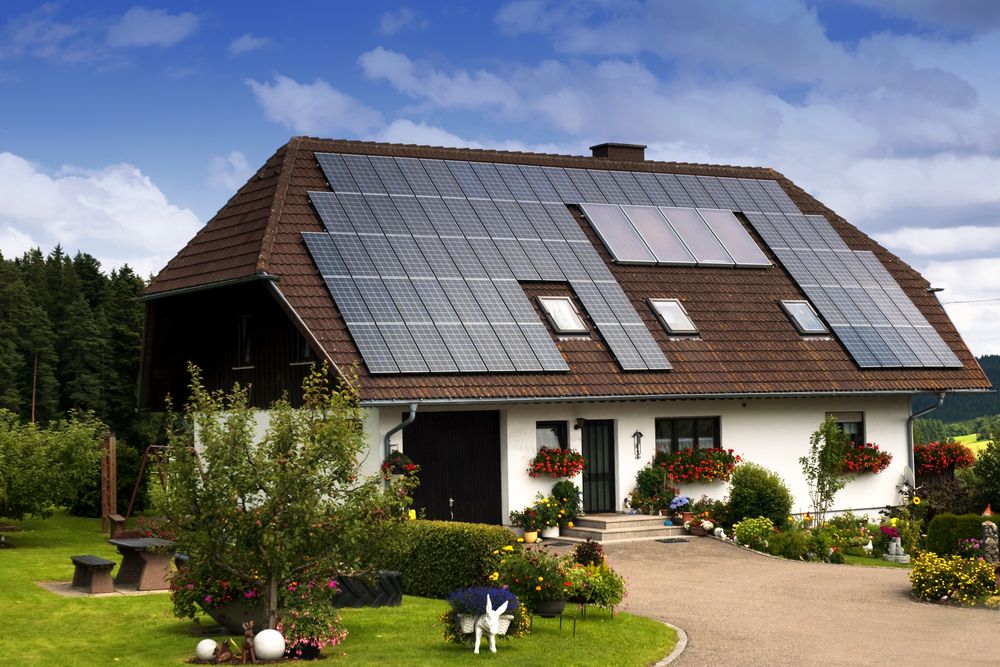Switching to solar energy can be a wise investment for homeowners, offering significant savings on electricity bills and an environmentally friendly way to power your home. With advancements in solar technology, declining costs, and available incentives, going solar is more affordable and accessible than ever. This ultimate guide covers everything you need to know about maximizing your savings with solar panels—from understanding costs and incentives to tips for maximizing efficiency.
1. Understanding the Initial Costs of Solar Panels
The cost of installing solar panels can vary widely based on factors such as system size, location, equipment quality, and labor. While the upfront cost may seem significant, it’s essential to understand that it’s an investment with long-term savings.
Key Cost Factors:
- System Size: Solar systems are measured in kilowatts (kW), with larger systems costing more but providing higher energy output.
- Panel Quality and Efficiency: High-efficiency panels may cost more but require less space and produce more electricity.
- Labor and Installation: Professional installation ensures the system operates effectively but may add to upfront costs.
- Inverters and Batteries: If you want to store energy, adding a solar battery will increase costs but allow you to use solar power even when the sun isn’t shining.
The average cost of a residential solar panel system in the U.S. is around $15,000 to $25,000, depending on these factors. Many installers offer financing options to help homeowners manage the upfront costs, allowing for monthly payments that are often lower than average electric bills.
2. Federal and State Incentives for Solar Savings
Incentives at both federal and state levels make solar installation more affordable. These incentives, credits, and rebates can reduce the cost of going solar significantly, helping you to achieve faster returns on your investment.
Federal Solar Tax Credit (ITC):
- 30% Tax Credit: Homeowners who install a solar system can claim a tax credit worth 30% of the installation cost. This incentive is set to phase down after 2032, so act sooner to maximize savings.
- How It Works: This tax credit reduces the amount of income tax you owe. For example, if you spend $20,000 on a system, you could claim a $6,000 tax credit, effectively lowering your installation cost.
State Incentives:
- Rebates: Many states offer rebates that reduce installation costs directly. These rebates vary by location and may range from a few hundred to several thousand dollars.
- Performance-Based Incentives (PBIs): Some states pay homeowners for the energy their solar panels produce, based on a per-kilowatt-hour basis.
- Sales and Property Tax Exemptions: Some states offer sales tax exemptions on solar equipment purchases and property tax exemptions to prevent your property taxes from increasing due to added home value from solar.
Check with local and state agencies or your solar installer for available incentives in your area, as these programs can vary widely.
3. Choosing the Right Solar Panel System
Selecting the right solar panel system for your home is crucial for maximizing savings. Here are some tips to help you choose the best setup based on your energy needs, location, and budget.
System Size and Power Needs:
- Energy Consumption: Review your utility bills to determine your average monthly energy use. This helps determine the system size you need to offset your usage fully.
- Roof Space: Smaller roofs may require high-efficiency panels to meet energy needs within limited space, while larger roofs can support more standard panels.
- Weather and Climate: Solar panels produce the most energy in sunny climates but are still effective in areas with varying weather, as they generate power from daylight, not just direct sunlight.
Types of Solar Panels:
- Monocrystalline Panels: Known for high efficiency and durability, these panels are ideal if you have limited roof space but want maximum output.
- Polycrystalline Panels: These are more affordable but slightly less efficient than monocrystalline panels, making them a good option if you have ample roof space.
- Thin-Film Panels: These are lightweight and flexible but typically less efficient and often used for specific applications, like covering larger areas or installing on non-standard roofs.
By selecting the right panel type and system size, you can maximize energy production and minimize costs.

4. Financing Options to Make Solar Affordable
For homeowners concerned about upfront costs, there are several financing options that make solar installation more affordable. From loans to leases, these options allow you to go solar with minimal initial expense.
Solar Loans:
- Low-Interest Loans: Many lenders offer solar-specific loans with low interest rates, allowing you to own your system and benefit from tax credits and rebates.
- Monthly Payments: Solar loan payments are often lower than monthly utility bills, making it easy to manage costs.
- Ownership Benefits: With a loan, you own the system and can benefit from all incentives, including the federal tax credit.
Solar Leases and Power Purchase Agreements (PPAs):
- Leasing: With a solar lease, you pay a fixed monthly fee to use the solar power generated by the system. The leasing company retains ownership, and you typically won’t benefit from tax incentives.
- PPAs: In a PPA, you agree to purchase the power generated by the solar panels at a set rate, usually lower than local utility rates. The installer owns and maintains the system, but you don’t receive tax credits.
Both leasing and PPAs provide an affordable way to go solar without the responsibility of ownership or maintenance, making them ideal for homeowners who want lower energy bills without the upfront investment.
5. Calculating Long-Term Solar Savings
Switching to solar provides significant long-term savings by reducing or eliminating monthly electricity bills. Here’s how to calculate potential savings to determine the financial benefits of going solar.
Calculating Your Solar Payback Period:
- Formula: Total System Cost / Annual Electricity Savings = Payback Period
- Example: If your system costs $15,000 after incentives and you save $1,500 per year on electricity, your payback period would be 10 years. Once your system is paid off, any additional savings contribute directly to your financial gain.
Considering Lifetime Savings:
- Solar panels generally last 25-30 years, providing substantial long-term savings once the payback period is reached.
- Many homeowners experience tens of thousands of dollars in savings over the system’s lifetime, with free energy generated after the system is paid off.
Calculating these savings helps illustrate the long-term financial impact of going solar, providing a clear picture of how much you’ll save compared to traditional energy sources.
6. Maximizing Solar Efficiency
Maximizing your system’s efficiency ensures that you get the most out of your investment. Implementing energy-saving habits and regular maintenance can optimize your system’s output and maximize savings.
Tips for Maximizing Solar Efficiency:
- Monitor Energy Usage: Use energy-efficient appliances and LED lighting to reduce overall consumption, helping your system cover more of your energy needs.
- Optimize Panel Placement: Ensure panels are installed where they receive maximum sunlight exposure, typically on a south-facing roof in the northern hemisphere.
- Regular Cleaning and Maintenance: Dust, dirt, and debris can reduce solar panel efficiency. Clean panels periodically or schedule professional maintenance to keep them performing at their best.
Maintaining high efficiency will help your system generate more power, reduce dependency on the grid, and increase your overall savings.
7. Selling Excess Solar Power with Net Metering
Net metering programs allow you to sell excess energy back to the grid, providing additional savings or even generating income. Net metering is an arrangement with your utility company where excess energy produced by your system is sent back to the grid in exchange for credits on your utility bill.
How Net Metering Works:
- Energy Credits: When your panels produce more energy than your home uses, the excess is credited to your account, offsetting future electricity usage.
- Seasonal Savings: Net metering can help balance out energy production and consumption between seasons, such as producing extra energy in the summer and using credits in the winter.
Check with your utility provider or solar installer to understand the net metering policies in your area, as they can vary by state and provider.
8. Benefits of Adding Solar Battery Storage
While net metering is beneficial, some homeowners prefer the flexibility of solar battery storage to keep the energy generated for later use, especially during grid outages or peak demand times.
Advantages of Solar Battery Storage:
- Backup Power: Batteries store excess energy, providing backup power during outages or when solar production is low.
- Energy Independence: Batteries allow you to use stored energy instead of relying on the grid, reducing your dependency on traditional power sources.
- Savings on Time-of-Use Rates: In areas with time-of-use rates, you can use stored energy during peak rate hours to avoid higher costs.
Battery storage adds to the initial investment but can increase savings and security, particularly in areas with unreliable grid power.
9. Evaluating the Environmental Impact of Solar Energy
Beyond financial savings, switching to solar has environmental benefits by reducing reliance on fossil fuels and lowering your home’s carbon footprint. Solar energy is clean and renewable, providing power without greenhouse gas emissions.
Environmental Benefits:
- Reduction in Carbon Emissions: Each kilowatt-hour of solar energy reduces carbon emissions, contributing to cleaner air and less pollution.
- Sustainability: Solar energy is a sustainable resource, unlike fossil fuels, which are finite and have a high environmental cost.
- Increased Home Value: Homes with solar installations are often more attractive to buyers, as they represent a commitment to sustainability and energy efficiency.
For environmentally conscious homeowners, going solar offers an impactful way to contribute to a healthier planet.
Switching to solar energy is a financially sound decision that provides substantial savings and aligns with sustainable practices. By understanding the costs, incentives, financing options, and ways to maximize efficiency, homeowners can make an informed decision and achieve significant long-term benefits from solar energy. With the right system and smart planning, solar panels can power your home affordably and sustainably for decades to come.





